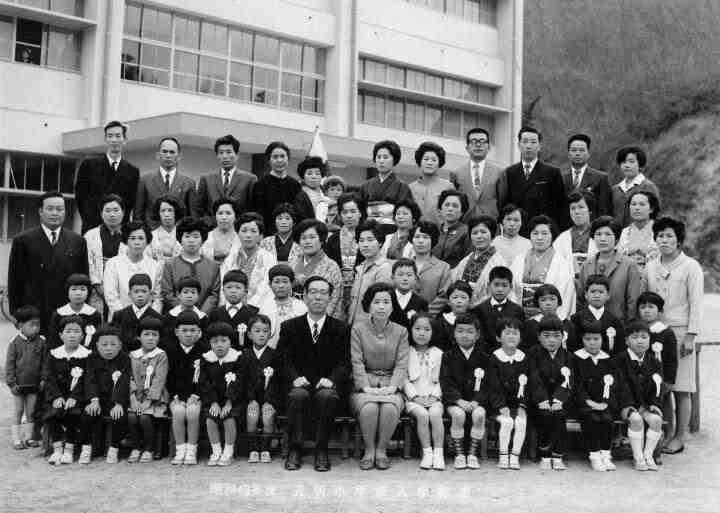
Japanese School Garments: Hosiery--School Types

Figure 1.--The hosiery worn by Japanese boys is at least in part a reflection of the type of school attended. Uniforms are more common and the rules about wearing them stricter than at state schools. For some reason the rules about hosiery are less strict than for other school uniform garments. They tend to be strictest at private schools, but even here there is a degree of variety not the case for other garments. Mote the variety of hosiery here. Click on the image for a fuller discussion.
|
The hosiery worn by Japanese boys is at least in part a reflection of the type of school attended. Uniforms are more common and the rules about wearing them stricter than at state schools. For some reason the rules about hosiery are less strict than for other school uniform garments. They tend to be strictest at private schools, but even here there is a degree of variety not the case for other garments.
Public School
Public schools (and I would guess about 1/3 the public schools require uniforms) typically have a very simple navy jacket (often without lapels) and navy shorts uniform. White shirts seem often to be required, but the type of shirt is often not specified. The most common color is white. Some of the school require white socks, some do not. I don't think most schools much care whether the socks are knee socks or not. I do not know of any public school that has a specific white knee sock requirement, although I believe a lot of them do require white socks of some sort.
Private School
Most private schools require uniforms, typically more elaborate than the very simple uniforms of public schools. Some do have specific sock requirements. A reader writes, "Keio Yochisha is NOT one of them. Boys wear socks of all colors and all lengths, as you can guess from looking at my picture. Keio has an optional unifrom ankle navy sock with red ring, but boys are not required to wear them and I don't see them much. The only school I know for sure with a knee sock requirement is Rikkyo (St. Paul"s) that requires navy knee socks. A private school near Myogadani stationhas a a white knee sock requirement, but just as often the boys in that uniform seem to be wearing ankle socks, although always white. Tsukuba has a uniform white mid-calf sock -- you can't just wear any old white sock--(and uniformed shoe as well which all boys wear.) Gyosei has a uniformed black ankle sock requirement (and uniformed black boot-like shoes)."
HBC

Related Chronolgy Pages in the Boys' Historical Web Site
[Main Chronology Page]
[The 1900s]
[The 1910s]
[The 1920s]
[The 1930s]
[The 1940s]
[The 1950s]
[The 1960s]
[The 1970s]
[The 1980s]
[The 1990s]
[The 2000s]
Navigate the Relate Boys Historical Clothing Style Pages
[Main country page]
[Long pants suits]
[Short pants suits]
[Lederhosen]
[Kneesocks]
[Eton suits]
[Jacket and trousers]
[Blazer
[School sandals]
Navigate the Boys' Historical Clothing School Uniform Pages
[Return to the Main Japanese School Uniform hosiery page]
[Return to the Main School Uniform Page]
[Australia]
[England]
[France]
[Germany]
[Ireland]
[Italy]
[Japan]
[New Zealand]
[Scotland]
[United States]
Navigate the Boys' Historical Clothing Web Page
[Introduction]
[Activities]
[Biographies]
[Chronology]
[Clothing styles]
[Countries]
[Bibliographies]
[Contributions]
[FAQs]
[Glossary]
[Satellite sites]
[Tools]
[Boys' Clothing Home]
Created: 7:47 PM 8/4/2006
Last updated: 7:47 PM 8/4/2006




